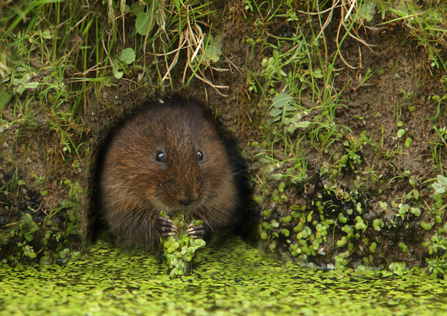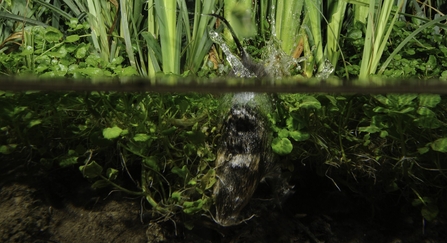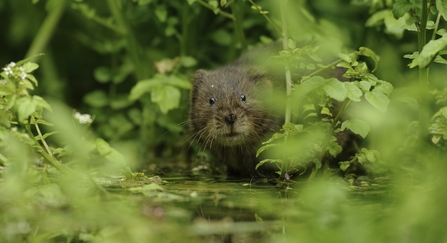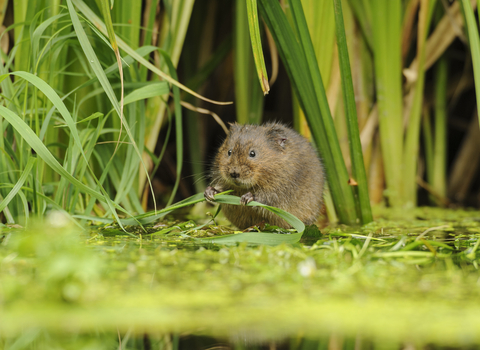Suffolk Wildlife Trust is working as part of a partnership of organisations, with Natural England to develop a Species Conservation Strategy for water vole in the East Anglian region, Suffolk, Norfolk and Essex. This work forms part of a species conservation pilot approach for water vole, covering a range of elements including an appraisal of the current legislative framework, an approach to controlling mink (an invasive non-native species which are negatively affecting water vole) and a habitat enhancement and creation strategy. A Species Conservation Strategy is a new mechanism to safeguard the future of species at greatest risk. The strategies will find better ways to comply with existing legal obligations to protect species at risk and to improve their conservation status.
Suffolk Wildlife Trust is leading on the habitat enhancement and creation element of the Species Conservation Strategy.
Why water vole?
The water vole is fully protected under Schedule 5 of the Wildlife and Countryside Act 1981, as amended and is a priority species under the UK Post-2010 Biodiversity Framework. Water voles are listed as endangered on both the Great Britain and the England Red List for Mammals. Water voles have undergone one of the most serious declines of any wild mammal in Britain during the 20th century. The intensification of agriculture in the 1940's and 1950's caused the loss and degradation of habitat, but the most rapid period of decline was during the 1980's and 1990's as American mink spread. Between 1989 and 1998, the population fell by almost 90 per cent. (PTES)

Water vole - Terry Longley
Why now?
As a part of the government’s commitment to leave the environment in a better state than we found it, the Environment Bill now requires a new, legally binding target to be set to halt the decline in species abundance by 2030. The nature and biodiversity measures in the Environment Bill will help to achieve this target. In England we already have strong protections in place for our most treasured sites and most threatened species. The 2030 species abundance target will set an ambitious goal which will drive action on the ground to go further and to work towards halting the decline of nature. A Species Conservation Strategy is a new mechanism to safeguard the future of species at greatest risk. The strategies will find better ways to comply with existing legal obligations to protect species at risk and to improve their conservation status. It builds on the success of the district level licensing approach for great crested newts. Species Conservation Strategies are designed to provide a more strategic approach to the complex challenge of protecting and restoring species and habitats. This strategy will avoid the need to identify project-specific solutions which can be difficult, time-consuming, and costly to implement. The strategies will feed into Local Nature Recovery Strategies, support local planning authorities and other public authorities in discharging their duty in respect of biodiversity and developing Local Plans, and complement plans for biodiversity net gain.

Water vole diving - Terry Whittaker/2020VISION
What do water vole need?
Water vole need well vegetated grassy and friable bankside habitat in which to burrow, alongside streams, rivers or ponds that hold water year-round. They need access to foodplants, particularly grasses and water plants amongst others, and roots, bulbs, and bark in the winter. They need cover from predators, and an absence of invasive American mink which can decimate a population.
Water vole live in colonies, with a dominant breeding female holding distinct breeding territory between 30 and 150m through the summer. A healthy population needs suitable bankside habitat able to hold several territories either contiguously or as part of a habitat mosaic (e.g., in a wetland. Habitat connectivity is an important factor in ensuring healthy populations in the landscape and in ensuring that populations can spread from strongholds.

Water vole - Terry Whittaker/2020VISION

